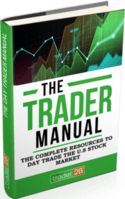If you’ve been thinking starting day trading in the US, then you should know it’s possible to trade in the US just like other parts of the world. However, you should know that the rules of day trading in the US are not the same as anywhere else. These day trading restrictions have discouraged many foreign brokers from working with US traders.
The U.S. Securities and Exchange Commission (SEC) has imposed day trading restrictions in the US stock markets. These prevent “pattern day traders” from operating unless they maintain an equity balance of at least $25,000 in their trading account. That means that to regularly day trade stocks in the U.S., you need at least $25,000 of your capital in your trading account. A big challenge for many aspiring traders
Pattern Day Trading
The SEC defines a day trade as any trade that is opened and closed within the same trading day. They define pattern day trading as four or more day trades within five trading days, assuming that the number of day trades is more than 6% of the total trades taken in the five-day period. This percentage stipulation isn’t a factor most of the time. If you are taking four or more day trades in a five-day period, you will be classified as a pattern day trader and subject to the $25,000 equity balance to day trade. Even one trade per day would classify the trader as a pattern day trader, and the restrictions would then apply.
Individual stockbrokers may have more stringent day trading restrictions. If a broker believes a trader may be engaging in day trading activities or the trader is frequently taking two- or three-day trades in a five-day period, that broker may impose the $25,000 minimum equity balance on that trader. In this case, the trader will need to maintain that balance if they wish to make any day trades. Check with your broker on restrictions.
Suspended Trading
If a trader is classified as a pattern day trader according to the SEC definition or by a broker’s discretion and the trader does not have the required $25,000 equity balance in their account, they will be prevented from making further day trades until the equity balance in the account is increased to $25,000. Day traders are only required to have the $25,000 balance on the days that they day trade.
Day Trading Restrictions – Leverage or Margin
Day traders in the U.S. are allowed to use up to 4:1 leverage. That means that if a day trader deposits $30,000 in his account, he can accumulate positions up to $120,000. Traders that hold positions overnight are allowed leverage up to only 2:1. Day traders are allowed to have more leverage since their positions are short-term, and therefore each trade is likely to experience smaller price swings compared to positions held for days, weeks, or years. If a funded trader exceeds his allowed margin, as their own deposited capital begins to drop because of a losing position, then the day trader will be issued a margin call.
Why Choose trader2B
Trader2B has recognized this issue and the fact that it holds back a lot of potentially talented traders from entering the markets. To help solve this problem, Trader2B has created the ToroChallenge. A simulation challenge using live market data with a match engine that can fill order flow and execution from various exchanges with a 95% accuracy rate. This incredible technology allows us to provide the most realistic day trading training challenge and the ability to assess whether traders are talented or just lucky.
Based on our proprietary technology, we give skilled traders who pass the ToroChallenge the opportunity to earn a live funded account to trade with our capital without having to bother with day trading restrictions.
Since the induction of the Securities and Exchange Commission’s rule on pattern day trading, Trader2B has been able to find and fund traders with a hidden talent.
Are you a skilled trader? Want to give the ToroChallenge a try? Sign up here.





